Helen Hunt, 60, Stuns During Her Latest Appearance, and Her Lips Become the Center of Attention

Imagine you’re hanging out somewhere in the forests of Australia. You’re thirsty, so you go to the nearest stream. Suddenly, you feel that you have a runny nose. It’s strange because you’re perfectly healthy. You stop and wait.
A few seconds pass — your nose is itching. A few minutes pass — your eyes are watering, your throat is going crazy, you can’t breathe freely, and you’re constantly sneezing. It seems you’re breathing poisoned air.
But what is poisoning it? The smallest particles of the most dangerous plant in the world are flying around you. It’s called Gympie-Gympie. There it is. It looks ordinary — a small bush with green stems and leaves.
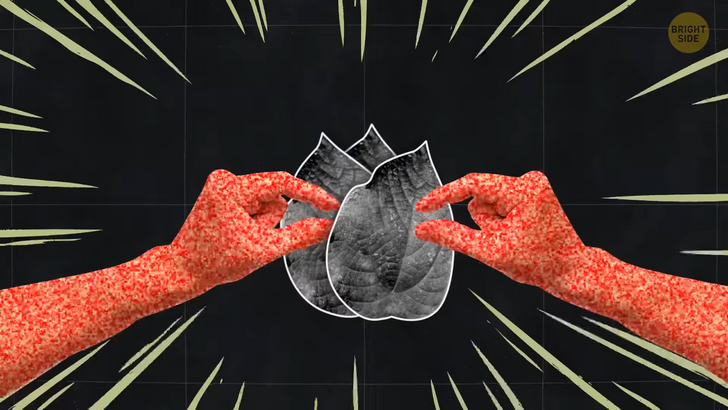
The closer you come, the worse you’re feeling. You need more air, and your skin is turning red. It physically hurts you to be here. You may lose consciousness if you stay here for a little bit more. Do you know what will happen if you touch this plant?
Well, it will feel like red-hot needles penetrating your skin. And even if you run away as far as possible from here right now, the pain will not subside. The effects of the sting will last for several hours. Days will pass, and the pain will remain. Weeks and months will pass, but you’ll still feel it.
You can wash the touch area with cold water and soap, but this won’t help a lot. It might not go away for several years. And all those tiny plant hairs that penetrated your skin can stay with you forever.
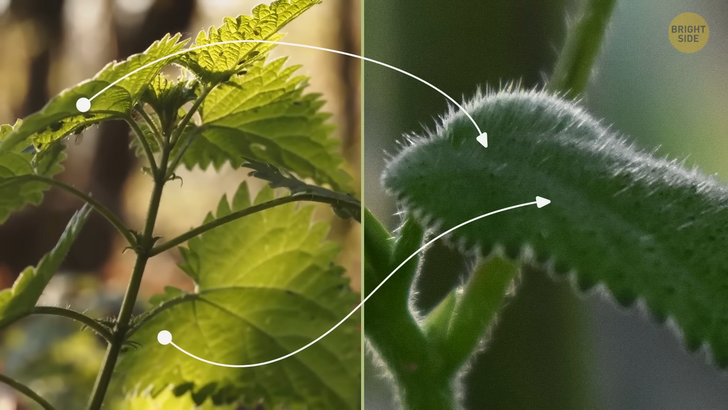
The toxicity of Gympie-Gympie is so high that even if you tear off one leaf and touch it after a year, it will still cause damage to your body. The bad news is that this plant is hard to spot. You can easily confuse it with burdock or nettle. Just imagine what will happen if someone falls into the bush.
Its distinctive feature is a thin layer of fluff on each leaf. But be careful — this fluff consists of thousands of poisonous hairs. They also fly around the plant, so it’s dangerous to be here without a gas mask. An ordinary medical mask won’t help here since the hairs can get through the fabric.
The good news is there aren’t many of them around the world, and people usually put warning signs near them. This bad guy grows in Australia. Gold miners discovered this plant in 1860 near the town of Gympie. And something is telling me it wasn’t the happiest discovery.
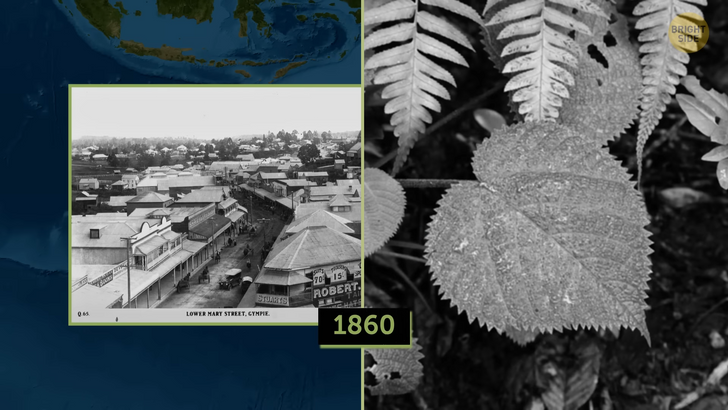
Even now, Gympie-Gympie poses a serious danger to loggers and tourists. You may accidentally touch it with your hand. One touch is enough to make you lose your working capacity for several weeks. In some cases, the affected area continues to hurt for decades.
One man fell into the bush and lost his mind because of the pain. People compare a Gympie-Gympie sting with a bite of 30 wasps at the same time! And you won’t know how to get rid of it. One guy experienced an unpleasant feeling every time he took a shower for two years after touching this plant.
If you want to study it, you need to wear a protective suit and a gas mask. There should be no open areas on your body. Tuck your pant legs into your boots, put on protective gloves, and move out into the forest. It grows on the edge, next to streams.
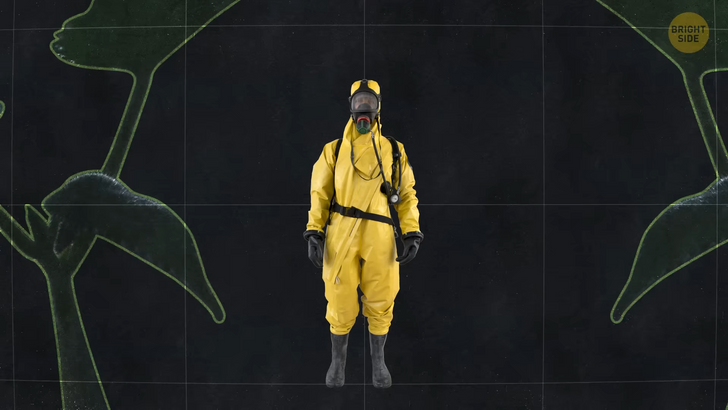
Gympie-Gympie is one of the six species of poisonous trees native to Australia. They love the sun and the vegetation around them. Every hair on the surface of the leaf is poisoned. When it contacts any surface, it opens and sprays a burning toxin. Then, the pain increases, and the skin turns red.
The duration of the effect depends on the number of hairs that penetrate your body. After a few years, you can put pressure on the bite site and feel the hairs are still there. There’s no antidote because scientists still don’t know what the toxic poison’s components are.
All they know is that the poison effect lasts a very long time, several years. It can withstand cold and hot temperatures. Water only enhances its effect. Botanical samples of this plant in laboratories are still dangerous despite scientists keeping them for several years.
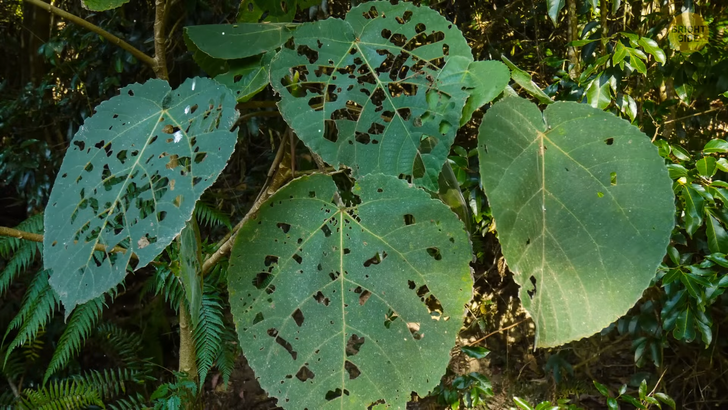
After you have passed by Gympie-Gympie, don’t forget to disinfect yourself. Carefully remove clothes, shoes, masks, and glasses. Put a protective suit in the washing machine and wash everything else well. Tiny hairs can be in your pants or the sleeves of your jacket, so be careful. This toxicity makes Gympie-Gympie the most protected plant in the world.
But, wait, what’s that? Do you see these little holes on its leaves? It seems that someone is eating it. These are the usual nocturnal beetle species. They can devour Gympie-Gympie all day long as the poisonous hairs can’t harm them. These bugs just don’t care. Gympie-Gympie is the perfect lunch as no one can disturb these beetles while they’re sitting on this plant. And yes, all the animals living nearby know that it’s better not to get close to it.
But there’s one mammal that is not afraid of Gympie-Gympie! It’s a red-legged pademelon. It looks like a little kangaroo and loves to eat the Gympie-Gympie leaves. Scientists still don’t know what exactly protects this animal from toxic hairs. We know almost all the places where this plant grows. People mark them with signs. If you see one, just don’t go there.
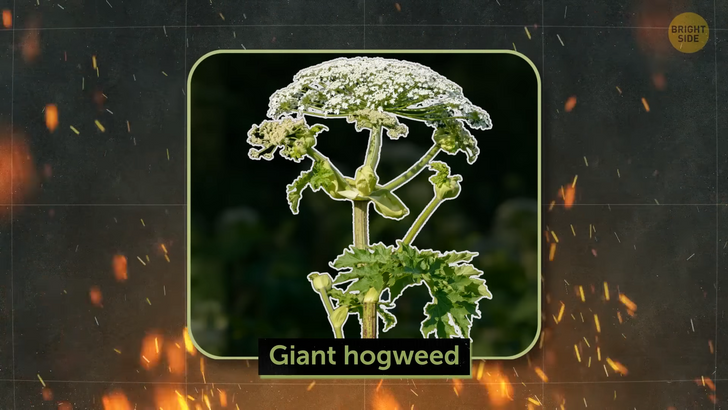
Gympie-Gympie is a terrible plant, but how about a plant that can take over the whole world and destroy all the crops? It doesn’t need favorable conditions for growth. It can survive in the rain, in arid places under the scorching sun, at low and high temperatures. It’s called the Giant hogweed.
If the seed of this plant gets into a vegetable bed or a wheat field, the plant will displace all competitors in a few weeks. The wind can blow on the Giant hogweed seeds and spread them further to the nearest territories. This plant can worsen ecosystems around the world. It grows faster than people manage to destroy it.
If you spray poison on the leaves, it doesn’t even care. If you let parasitic beetles into Giant hogweed territory, it doesn’t care, either. It multiplies very fast and lives longer than many plants. The Giant hogweed can reach the height of a one-story house and go deep underground with its roots.
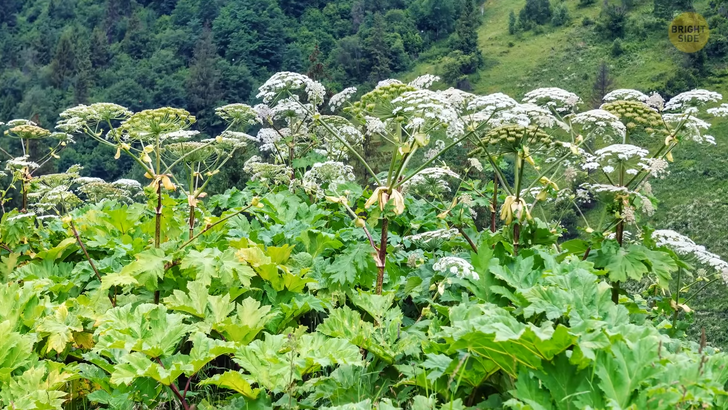
It’s also dangerous to touch it with your hands. It can turn your skin red, and it won’t feel good, to say the least. That’s how it’s making it so hard to fight against it. This poison destroys any plants, bushes, and flowers nearby.
Scientists still can’t create an effective poison to combat this green monster. No beetles feed on it. That’s why the Giant hogweed is one of the most dangerous plants in the world. It simply has no enemies in nature.
But scientists are sure that evolution will create some creatures capable of destroying the Giant hogweed. It can be small bugs or parasitic bacteria. But until that happens, people have to fight this beast on their own. They spend millions of dollars trying to destroy the plant, but it doesn’t always work out. You can burn a field, but if one seed remains, it will quickly grow on the scorched ground.
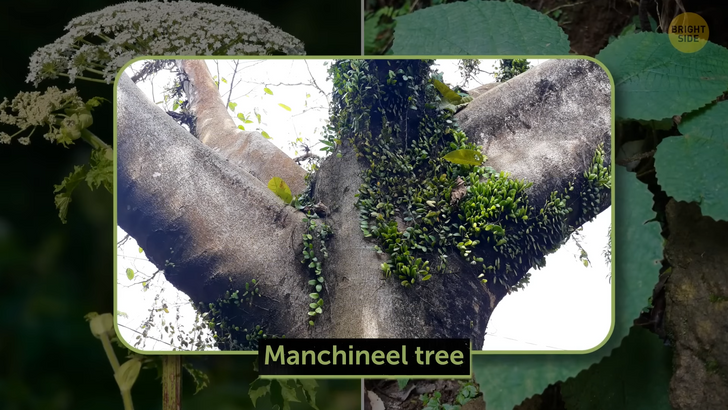
You’ve seen some of the most dangerous plants in the world. But what about trees? A Manchineel tree grows in Florida. Its trunk secretes toxic juice that’s dangerous for your skin. But it gets much worse during the rain. When water falls on the bark, it mixes with the poison.
Then, these poisoned drops can bounce off the tree and get on your skin. Leaves and fruits also have this toxin. So, never hide under this tree in bad weather. Mushrooms, shrubs, and flowers don’t grow near this tree, either. Animals never come close to it. Birds never sit on its branches.
Manchineel trees are resistant to water and high temperatures. Never try to burn it! The smoke released during combustion is toxic and dangerous to your eyes. The locals mark this tree with red circles.











